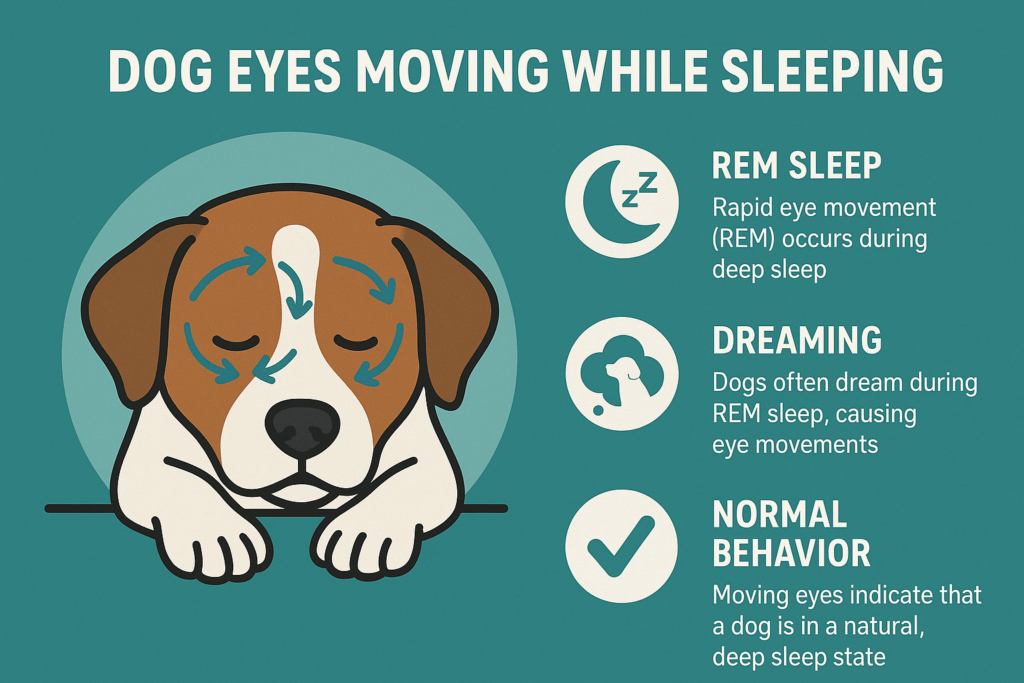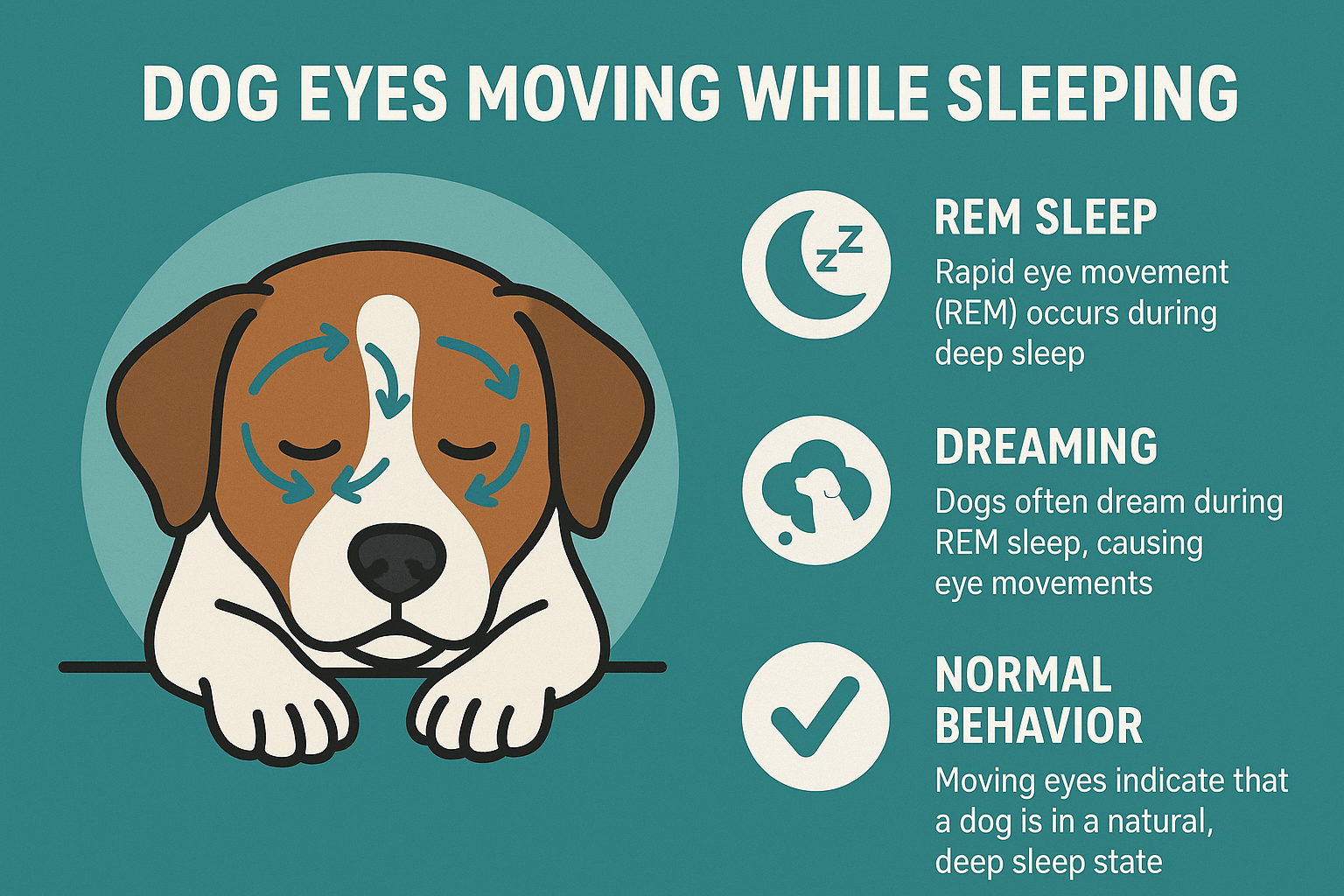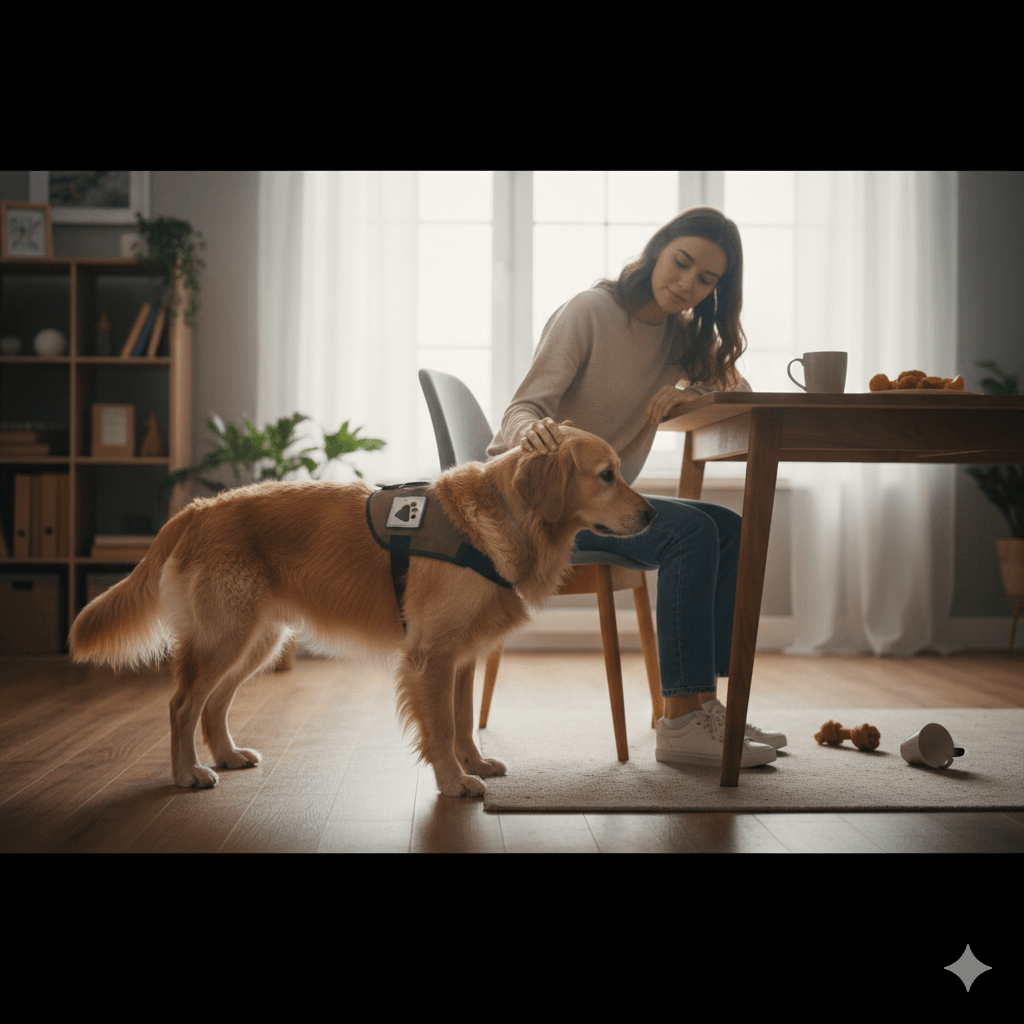Why Do Dog Eyes Move While Sleeping?
Have you ever noticed your dog’s eyes darting back and forth or twitching while they sleep? This fascinating behavior often leaves pet owners wondering what’s going on in their furry friend’s mind. Eye movement during sleep is a natural phenomenon linked to the sleep cycle, particularly REM (rapid eye movement) sleep. During this stage, dogs may dream, process emotions, and even replay events from their day. Understanding why dog eyes move while sleeping can provide insight into their mental and emotional well-being, helping you better care for your four-legged companion. Let’s explore the science, significance, and signs to watch for when observing this curious behavior.
Expert Insight: Understanding Dog Eye Movements During Sleep
“When a dog’s eyes roll back while sleeping, it is usually nothing to worry about. In fact, it is quite common and is typically a sign that your furry friend is in a deep state of sleep. Just like humans, dogs go through different stages of sleep, including REM (rapid eye movement) sleep. During this stage, their eyes may roll back, flutter, or even open slightly. This is perfectly normal and is just a sign that your dog is experiencing vivid dreams.”
— Dr. Jess
The Science Behind Dog Eyes Moving While Sleeping
When your dog’s eyes move during sleep, it’s often a sign that they’ve entered the REM phase of their sleep cycle. This stage is crucial for cognitive function and emotional processing. Here’s what happens scientifically during this phase:
REM Sleep Activation:
During REM sleep, the brain becomes highly active, similar to when your dog is awake. This is when rapid eye movements occur as the brain processes information.Dreaming and Visualization:
Scientists believe that dogs dream during REM sleep, which explains why their eyes might move as if they’re “watching” something in their dreams.Muscle Twitches Accompany Eye Movements:
Alongside eye movements, you may notice small muscle twitches or paw movements, indicating your dog is physically responding to their dreams.Brain Activity Mirrors Humans:
Studies show that dogs experience REM sleep similarly to humans, suggesting they also dream about daily activities or experiences.Sleep Cycle Patterns:
Dogs typically enter REM sleep about 20 minutes after falling asleep, and this stage lasts for a few minutes before cycling back to deeper sleep.
Understanding these scientific aspects helps explain why your dog’s eyes move while sleeping—it’s simply their brain hard at work processing the day’s adventures.

Signs Your Dog Is Dreaming During Sleep
While eye movements are a key indicator of dreaming, there are other signs that suggest your dog is actively dreaming. Observing these behaviors can deepen your understanding of their sleep patterns.
Whining or Barking:
Soft whimpers, growls, or barks often accompany dreams, especially if your dog is dreaming about chasing prey or interacting with other animals.Paw Twitching:
Watch for rhythmic paw movements, which may indicate your dog is running or playing in their dream world.Facial Expressions:
Some dogs display facial expressions like lip licking, teeth chattering, or ear flicking while dreaming.Tail Wagging:
Even while asleep, your dog’s tail might wag slightly, signaling positive emotions or excitement in their dream.Shallow Breathing Changes:
Irregular breathing patterns, such as quick bursts of breath, often align with heightened brain activity during REM sleep.
These subtle yet telling signs reveal how vivid and engaging your dog’s dreams can be, offering a glimpse into their inner world.
Check this guide 👉How to Help My Dog Sleep at Night: Best 7 Expert Tips!
Check this guide 👉Why Does My Dog Sleep on My Head? Best 7 Behavior Tips!
Check this guide 👉Why Does My Dog Sleep Between My Legs? Best 7 Expert Tips!
Benefits of REM Sleep for Dogs | Signs of Healthy Sleep Patterns |
|---|---|
Enhances memory retention | Consistent sleep duration |
Supports emotional regulation | Regular REM cycles |
Promotes problem-solving skills | Minimal restlessness |
Reduces stress and anxiety | Calm transitions between sleep stages |
Boosts overall brain health | No excessive snoring or gasping |
What to Do If Your Dog’s Eye Movements Seem Unusual
While occasional eye movements during sleep are normal, certain behaviors might warrant closer attention. Here’s what to look out for and how to respond.
Excessive Twitching:
If your dog’s entire body is twitching violently, it could indicate a seizure rather than normal REM sleep. Contact your veterinarian immediately.Unusual Vocalizations:
Loud crying, screaming, or persistent whimpering during sleep may signal distress or discomfort. Monitor your dog closely for recurring patterns.Interrupted Sleep Cycles:
Dogs that wake up frequently or seem restless throughout the night may not be getting enough deep sleep. Consult your vet to rule out underlying issues.Open Eyes During Movement:
If your dog’s eyes are partially open while moving, it could be a sign of a neurological issue. Seek professional advice promptly.Changes in Behavior After Waking:
If your dog seems disoriented, lethargic, or unresponsive after waking, it may indicate an underlying health concern requiring evaluation.
By staying vigilant and addressing any abnormalities early, you can ensure your dog’s sleep remains restorative and safe.
How to Support Your Dog’s Sleep Quality
Ensuring your dog gets high-quality sleep is essential for their physical and mental health. These tips can help create an environment conducive to restful slumber.
Establish a Consistent Routine:
Set regular times for feeding, play, and bedtime to regulate your dog’s internal clock and promote better sleep habits.Provide a Comfortable Bed:
Invest in a supportive, cozy bed that suits your dog’s size and sleeping preferences, whether they curl up or stretch out.Minimize Distractions:
Create a quiet, calm space free from noise, bright lights, or interruptions to encourage uninterrupted sleep.Engage in Daily Exercise:
Physical activity during the day helps tire your dog out, making it easier for them to settle down and fall asleep at night.Monitor Their Diet:
Avoid heavy meals or treats close to bedtime, as digestion can disrupt sleep. Opt for lighter snacks instead.
By prioritizing your dog’s sleep environment and routine, you can help them achieve deeper, more restorative rest.
Common Myths About Dog Sleep
There are several misconceptions about dog sleep that can lead to confusion. Let’s debunk some common myths to set the record straight.
Myth: Dogs Don’t Dream Like Humans Do:
Research shows dogs experience REM sleep and likely dream in ways similar to humans.Myth: Eye Movements Mean Pain or Discomfort:
In most cases, eye movements are a normal part of REM sleep and not a cause for concern.Myth: Older Dogs Don’t Dream Anymore:
While older dogs may dream less frequently, they still experience REM sleep and its benefits.Myth: Interrupting Sleep Won’t Harm Your Dog:
Waking a deeply sleeping dog abruptly can cause stress or confusion, so it’s best avoided.Myth: Dogs Only Sleep When They’re Tired:
Dogs have specific sleep needs based on their energy levels, breed, and daily activities, not just fatigue.
Separating fact from fiction helps ensure you approach your dog’s sleep with accurate knowledge and care.
How Age Affects Dog Sleep and Dreams
A dog’s age plays a significant role in their sleep patterns and dreaming behaviors. Understanding these differences can help you tailor care to their life stage.
Puppies Sleep More Frequently:
Young dogs require up to 20 hours of sleep per day, spending ample time in REM sleep as their brains develop.Adult Dogs Have Established Routines:
Adult dogs typically sleep 12-14 hours daily, with predictable REM cycles tied to their daily activities.Senior Dogs Experience Fragmented Sleep:
Older dogs may nap more during the day and struggle with restlessness at night due to age-related changes.Dream Intensity Varies by Age:
Puppies tend to dream vividly, while senior dogs may dream less intensely as their activity levels decrease.Health Conditions Impact Sleep:
Arthritis, anxiety, or other ailments in senior dogs can disrupt sleep quality, necessitating veterinary support.
Recognizing these age-related shifts ensures you adapt your care practices to meet your dog’s evolving needs.
Fun Facts About Dog Dreams
Dog dreams are not only scientifically intriguing but also filled with delightful quirks that make them uniquely endearing. Here are some fun facts to spark your curiosity.
Dogs Likely Dream About Their Owners:
Studies suggest dogs dream about familiar faces, including their beloved human companions.Smaller Breeds Dream More Often:
Toy breeds like Chihuahuas and Pugs tend to enter REM sleep more frequently than larger breeds.Eye Movements Reflect Dream Content:
The direction and speed of eye movements may correspond to what your dog is “seeing” in their dream.Dogs Can Laugh in Their Sleep:
Some dogs exhibit soft grunts or sighs during dreams, resembling laughter or contentment.Dreams Strengthen Bonds Between Dogs and Owners:
Shared activities during the day, like walks or playtime, often feature prominently in dreams, reinforcing emotional connections.
These charming insights highlight the beauty of dog dreams and deepen our appreciation for our canine companions.
Frequently Asked Questions About Dog Eyes Moving While Sleeping
Is it normal for my dog’s eyes to move while they sleep?
Yes, it’s completely normal and indicates they’re likely in the REM stage of sleep, where dreaming occurs.
Do all dogs dream?
Most dogs dream, but the frequency and intensity of dreams can vary based on age, breed, and individual personality.
Should I wake my dog if they seem distressed while dreaming?
It’s best not to wake them unless absolutely necessary, as sudden awakenings can startle or confuse them.
How long does REM sleep last in dogs?
REM sleep typically lasts a few minutes at a time, occurring multiple times throughout a full sleep cycle.
Can puppies dream too?
Yes, puppies experience REM sleep and may dream more frequently than adult dogs due to their developing brains.
Embracing the Wonder of Your Dog’s Dreams
Watching your dog’s eyes move while they sleep offers a fascinating glimpse into their subconscious mind. Whether they’re chasing squirrels, reuniting with loved ones, or simply reliving a fun day at the park, these moments remind us of the depth and richness of our dogs’ inner lives. By understanding the science behind their sleep and ensuring they have a comfortable, supportive environment, you can help your furry friend enjoy restful nights and energized days. So next time you see those tiny eye movements, take a moment to appreciate the magic of your dog’s dreams—it’s just one more way they bring joy and wonder into our lives.
Understanding Bone Supplement for Cats: Best 7 Expert Tips! – Safe, vet-approved guidance for strong feline bones & balanced nutrition.
Bone Supplement for Dogs: Best 7 Expert Tips! – Expert guide to calcium, collagen & bone health for every life stage.
Understanding Can Cats Get Sunburn: Best 7 Expert Tips! – Protect your feline from UV damage with vet-backed prevention strategies.
How to Train a Seizure Alert Dog: Best 7 Expert Tips! – Learn expert-backed steps to nurture natural instincts into reliable, life-saving seizure alerts.





